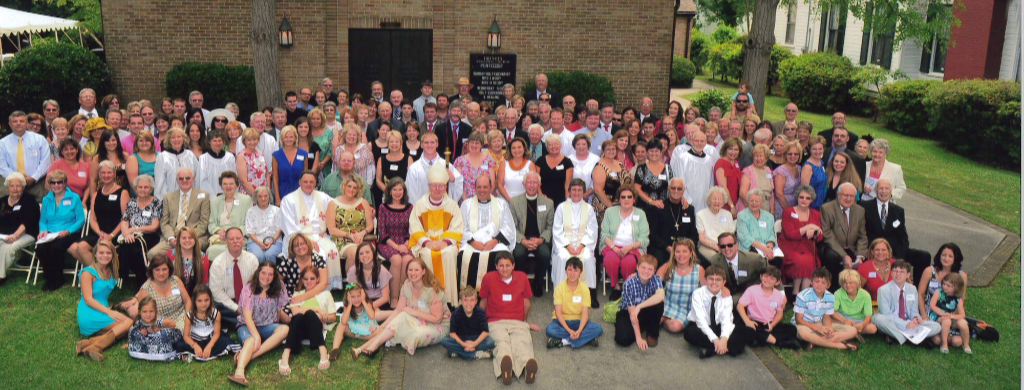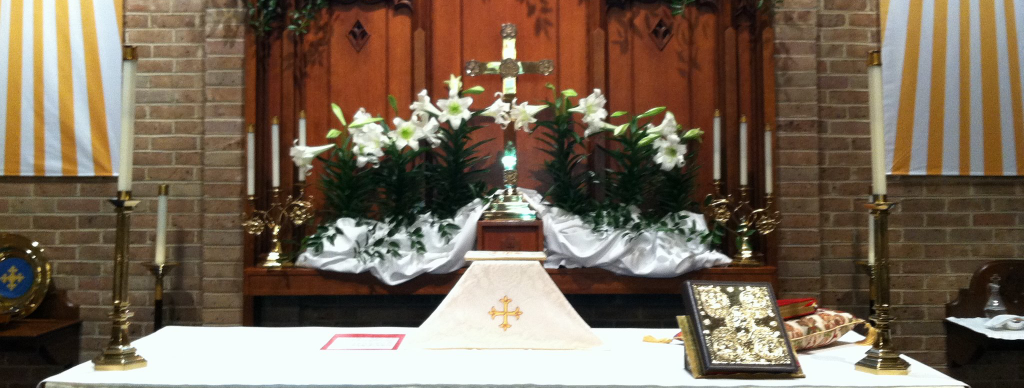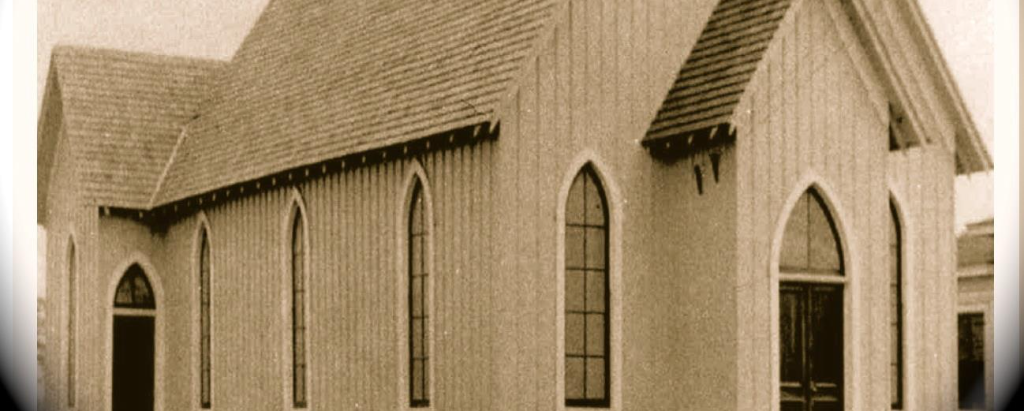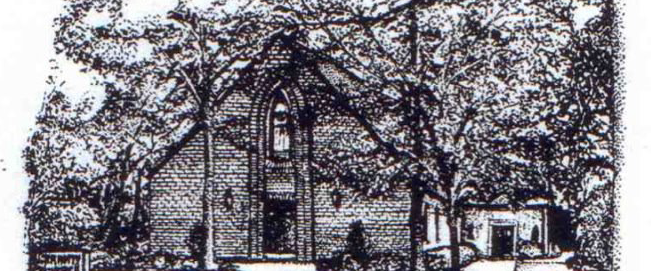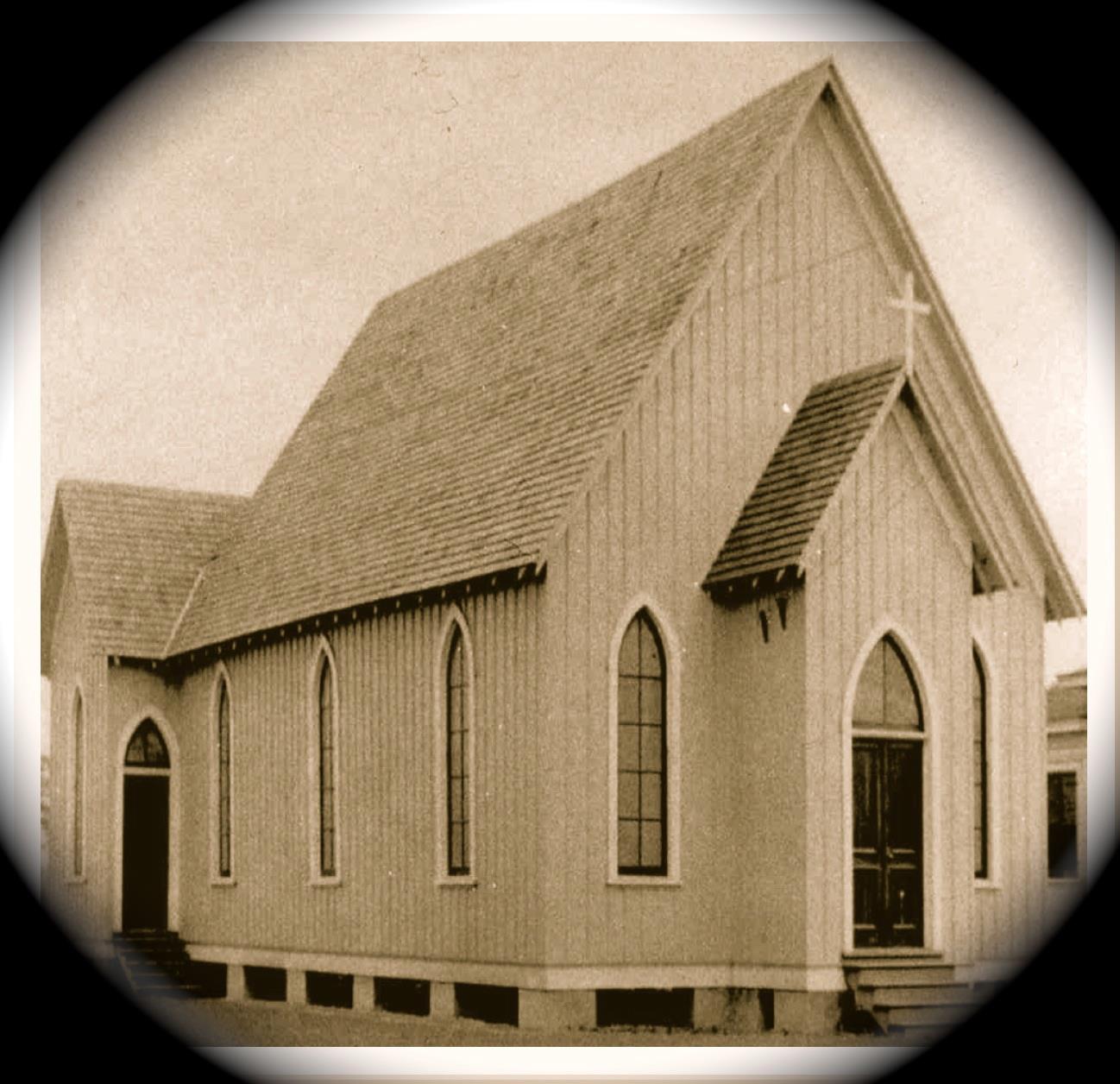
History of Trinity Episcopal Church
On June 12, 1912, nine men and women met with the Rt. Rev. Robert Strange (1904-1914), Second Bishop of East Carolina, and Archdeacon Noe in the home of Mr. and Mrs. John Q. Beckwith to organize an Episcopal Church in Lumberton. Six of the nine were faithful Episcopalians who had moved to Lumberton, missed their church, and wanted to do something about it. The Bishop approved their request; committees were appointed, and they named the new mission “Trinity.”
Under the inspired leadership of the Rev. J. L. Moody, the small, but determined, group began raising the necessary funding to make their vision a reality. Services were held in the homes of the organizers, and once a month in the Presbyterian Church. Within two years, they had raised the then enormous sum of $2,993. They spent $1,230 for the lot at 1202 North Chestnut Street, and $1,699 for the building.
In just three years, their vision became a reality—a small white wooden Gothic-style church was constructed, with dark oak furnishings, a reed organ, a seating capacity of 125, and a large pot-bellied stove.
On Palm Sunday, March 28, 1915, the Rt. Rev. Thomas Campbell Darst (1914-1945), Third Bishop of East Carolina, consecrated Trinity of Lumberton as his newest mission. For the next 23 years, Trinity was served by many devoted priests-in charge and faithful lay readers. Among those priests was the Rev. Thomas H. Wright, a future Bishop of the Diocese of East Carolina. During this period of WWI and the depression, membership grew slowly, and there were many ups and downs which threatened Trinity’s existence. Mr Beckwith had to call Bishop Darst several times to tell him “you cannot close our church” - and it was never closed.
There was an influx of Episcopalians in the mid 1930’s and, with the spirited leadership of the Rev. B. F. Huske, the church began to show real growth. In 1938, Trinity was admitted to the Diocese as a self-supporting parish. The Rev. Huske served Trinity as priest-in-charge through the fall of 1944.
In the winter of 1945, the vestry decided to have special services during Lent. After several cancellations, due to military obligations, a mission was planned for April. The Rev. John H. Bonner, Jr. lead the services, which were “very successful and enjoyed by all.” After the last service, Mr. Beckwith traced the history of the church and ended with, “Mr. Bonner, we all would like very much for you to become our Rector.” Mr. Bonner was offered a salary of $225 per month, and shortly thereafter became Trinity's first resident rector.
For the next twenty years, Trinity enjoyed a growing membership and entered a period of facility expansion and replacement. The first parish hall was dedicated in 1948, and a rectory built in 1952. In 1956, a building fund was begun to replace the original wooden church building. The old building was razed in 1960, and the new, simplified Gothic-style church was dedicated on January 28, 1961. The beautiful new brick building included a stained glass window and eight light fixtures from the original building. The only changes made since 1961 were made in 1980, to accommodate a wonderful 743 pipe Moller Pipe Organ. The organ was given to Trinity as a memorial to Dr. Allan Gray by the Gray family.
Next in the building cycle was replacement of the outgrown parish house in 1977. It is now a large multi-purpose facility with classrooms, offices, a great hall, and kitchen. Outside the library’s window is our beautifully landscaped columbarium, which was dedicated in early 1991. Just beyond the columbarium, on the north side of the church, are the Pruett-Bridges memorial garden and common grounds.
During its ninety-five years of existence, Trinity has been known for its warm, caring church family and its community involvement. We give special thanks to those who have gone before us and prepared all that we now enjoy.

Rectors of Trinity Parish
1894 - Edward Wooten
1910 - N C Duncan
1912 - Thomas P Noe
1914 - Herbert M Grantham
1919 - James C Crosson
1921 - Thomas F Opie
1933 - William Martin Latta
1935 - Walter Raleigh Noe
1936 - J Leon Malone
1938-1942 The Reverend Bartholomew Fuller Huske
1943-1945 Lay Readers
1946-1950 The Revernd John Hare Bonner, Jr.
1950-1953 The Reverend Henry Tobias Egger
1953-1966 The Reverend Robert Judson Snell
1967-1972 The Reverend Frederic William Reese
1974-1986 The Reverend Jamie Garland Teasley, Jr.
1988-1991 The Reverend Russell L. Johnson
1992-2001 The Reverend Gary M. Noteboom
2003-2013 The Reverend Roger Dale Kappel
2013-2024 The Reverend Eugene O. Wayman
2025 - Searching for a new Rector
